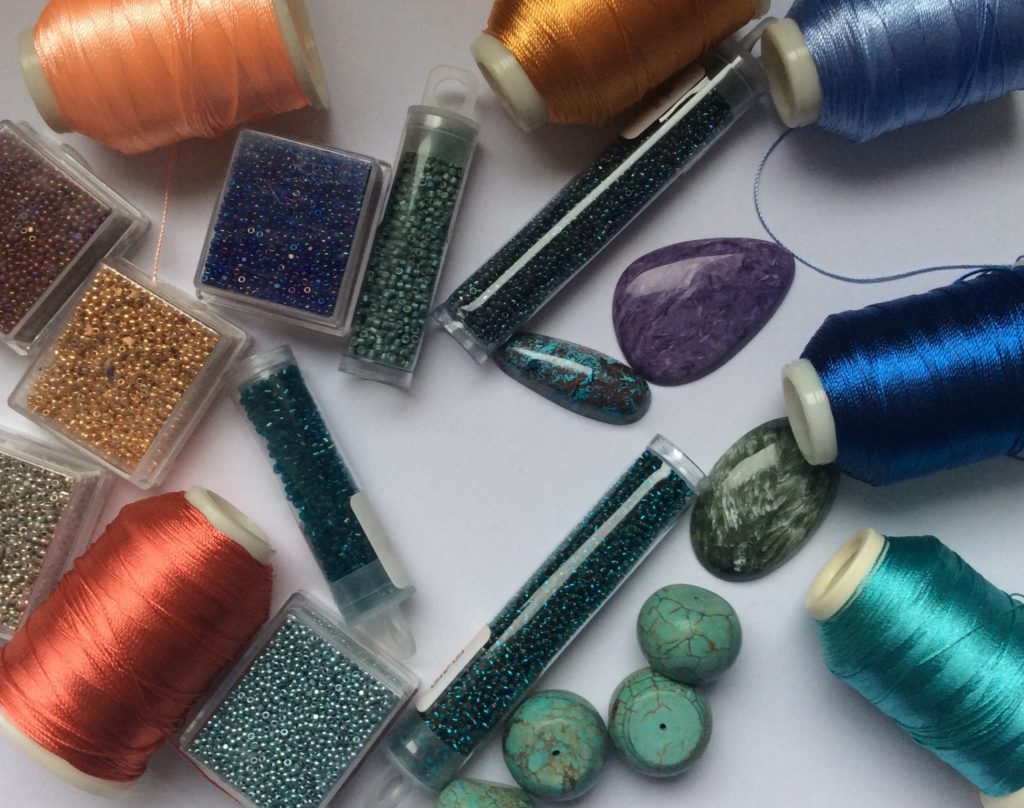
Is Imagination indeed such an ephemeral substance? Why do some people generate hundreds of wonderful ideas many of which remain just ideas because of lack of time, while others run circling around the room and spend sleepless nights trying to produce just one original thought? What is a way out for ordinary artisans sitting in front of boxes full of wonderful stones, beads and thinking what to do with all these treasures?
As a child, nobody among us lacks imagination; a stick could turn into a car, a tank, a horse or a house depending on what is necessary at the moment. As we grow up, our life experience imposes on us certain rules, limitations and definitions. Our imagination cannot but suit this “frame”. If you are not an artistic person, this becomes quite natural to you. But what if you are, and your soul demands to create something but no idea comes to you naturally?
Nothing is lost forever and imagination can be developed. There are several quite simple exercises. Here I describe only those I use myself. If you need more, search the Internet.
1. “Let go” the rules. Take something very simple. For instance – draw a circumference. By definition, this is a closed form. Now (let mathematicians forgive me) open it. Cut it into separate arcs and draw them apart, rotate them, add various shapes in between, and so on. Such simple exercises could be done mentally also. You can create new shapes for everyday objects or invent new ways to use them. In parallel, try to think if you can implement your inventions in your own technique.
2. More or less the same as above but with words. Invent new (sensible!) words and names for everyday objects. Or play good old charades, a perfect game to play with friends and family. The idea is to show the meaning of a certain word or phrase not using words. The game trains not only imagination, but also resourcefulness – the essential quality for every artisan.
3. Another exercise is to set certain limitations for yourself or your project. For instance, limit yourself to a particular color scheme or particular raw materials, style or shape. Here various contests come handy. Participation is free in many of them. My personal recommendation is Fashion Colorworks contest. They set color triads from a trendy palette and ask contestants to create something in given colors. You can find rules on the contest page. There are lots of other contests held by handicraft magazines worldwide.
Now about master classes. Do not let yourself be dominated by them. Consider them a theory, basics or blocks for your own creativity. The most important things will be stressed for you by a master. But do not be afraid to break rules, combine patterns or use new materials. Be open to experiments. Do not be afraid to make a mistake. A true artisan reacts to a mistake by saying “Oh, something new and interesting I got!” Good Luck!